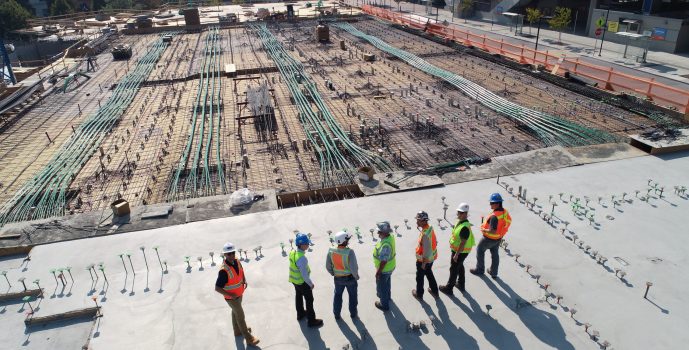There’s no denying that, despite various developments within the construction sector in recent years, there’s still ample progress to be made. And, as 2021 presented a number of challenges under the continued pressure of COVID-19 — from materials shortages to skills gaps — industry professionals were required to think and act quickly in order to mitigate disruption and maintain ‘business as usual’, with many people left wondering what to expect from the construction world, come 2022.
If the past two years has taught us anything, it’s that resting on our laurels is not an option, and instead we must focus on evolving strategies in order to stay ahead of the curve. While many of the events of the next year are uncertain, here, we have compiled a list of our predictions for the construction industry in 2022 and beyond.

- Environmentally-conscious decision making
As sustainability continues to be at the forefront of people’s minds, businesses and individuals all over the world are making changes — large and small — to adopt more environmentally-friendly practices.
As it stands, the construction industry is one of the biggest consumers of global resources — and contributors to pollution — and as a result, has a huge responsibility to prevent climate change and aid sustainability.
We expect to see a dramatic surge in sourcing renewable and recyclable resources and materials, and more developed government legislations will require construction professionals to secure their environmental strategies and join the collective effort to reduce the carbon footprint of the industry.

- Overcoming supply chain challenges
Last year, the construction sector was confronted with supply chain setbacks, rising material costs, and labour shortages — and unfortunately, these disruptions are likely to continue well into 2022. The key to mitigating these issues will come down to industry resilience — communication with suppliers, building up reserves, and negotiating backup providers.
Minimising reliance on foreign exports is also an important piece of the puzzle, instead establishing local and regional connections — which will also boost organisations’ environmental credentials in the process.

- Construction of data centers will continue to soar
As the pandemic prompted a boom in remote working and home-based activities, we saw a heightened demand for data centers that could facilitate the global internet surge.
As this rise continues well into 2022, data center operators will be challenged to maximise their facilities to meet current data needs — and secure them for the demands of future generations.
These facilities can offer a positive contribution to energy savings by reducing physical meetings, centralising services efficiently, and utilising cutting-edge – rather than outdated, technology – run and maintained by field specialists.
Global data center infrastructure was expected to reach £145billion by the end of 2021, and as Microsoft announced its plan to build 100 new data facilities each year, we expect to see the upward trend continue, with many other companies announcing their own building plans.
We’d love to hear your thoughts on what the next 12 months could entail. Why not head over to our Twitter page to chat or connect with us on LinkedIn?








